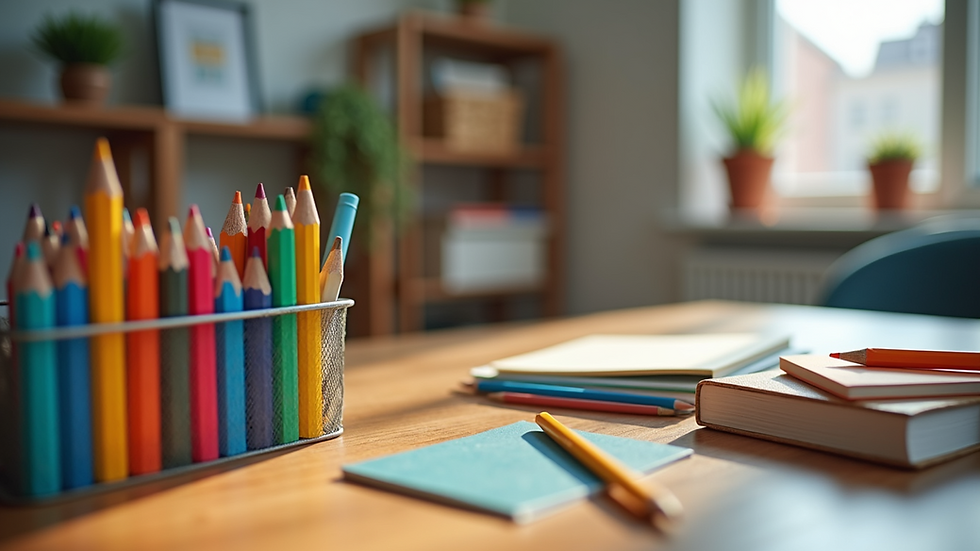Top Educational Resources for Lifelong Learning
- Jennifer Cimini, M.S. Ed.

- Aug 20
- 3 min read
Updated: Sep 15
Lifelong learning is a journey that never truly ends. Whether you're guiding a young reader through their first books or supporting a neurodivergent learner in discovering new skills, having the right tools can make all the difference. I’m excited to share with you some of the best educational tools that can transform learning from a challenge into a joyful adventure. Ready to explore? Let’s dive in!
Unlocking Potential with the Best Educational Tools
When it comes to supporting learners of all ages and abilities, the right educational tools are game-changers. These tools are designed to engage, motivate, and build confidence. From interactive apps to hands-on materials, the options are vast and varied. But how do you choose what’s best?
Here are some top picks that I’ve found incredibly effective:
Interactive Reading Apps: These apps make reading fun and accessible. They often include features like read-aloud, word highlighting, and games that reinforce vocabulary.
Multisensory Learning Kits: These kits combine visual, auditory, and tactile elements to help learners grasp concepts more deeply.
Online Courses and Webinars: Perfect for educators and parents alike, these provide strategies and insights to support diverse learning needs.
Assistive Technology: Tools like speech-to-text software or audiobooks can open doors for learners who struggle with traditional reading and writing.
Using these tools consistently can build skills and confidence. Plus, they make learning feel less like a chore and more like an exciting challenge to conquer!

What is the Meaning of Educational Resources?
You might wonder, what exactly do we mean by educational resources? Simply put, educational resources are materials, tools, or content designed to support learning and teaching. They can be physical items like books and manipulatives or digital tools like apps and websites.
Educational resources serve many purposes:
Enhance Understanding: They provide different ways to explore and grasp concepts.
Support Diverse Learners: Resources can be tailored to meet individual needs, especially for neurodivergent learners.
Encourage Engagement: Interactive and hands-on resources keep learners interested and motivated.
Facilitate Skill Development: From literacy to critical thinking, these resources help build essential skills.
For example, a parent might use a phonics app to help a struggling reader practice sounds, while a teacher might incorporate a multisensory math kit to explain fractions. The key is finding resources that fit the learner’s style and goals.

How to Choose the Right Educational Tools for Your Needs
Choosing the best educational tools can feel overwhelming. There are so many options out there! But don’t worry - I’ve got some tips to help you make smart choices:
Identify the Learner’s Strengths and Challenges
Understanding where the learner excels and where they struggle is the first step. This helps you pick tools that target specific areas.
Look for Evidence-Based Options
Tools backed by research or proven success stories are more likely to be effective.
Consider Accessibility and Ease of Use
The best tools are user-friendly and accessible to the learner’s abilities.
Seek Flexibility and Adaptability
Tools that can be customized or used in different ways offer more value over time.
Read Reviews and Get Recommendations
Hearing from other parents, educators, or professionals can guide you toward trusted resources.
Remember, the goal is to support growth and confidence. Sometimes, combining several tools works best. For example, pairing an interactive reading app with a hands-on phonics kit can reinforce learning in multiple ways.

How to Make the Most of Educational Resources
Having great tools is just the beginning. To truly benefit, it’s important to use them effectively. Here are some strategies I recommend:
Set Clear Goals
Define what you want to achieve with each tool. Is it improving reading fluency? Building math confidence? Clear goals keep you focused.
Create a Routine
Consistency is key. Regular, short sessions often work better than long, infrequent ones.
Celebrate Progress
Acknowledge every small win. Positive reinforcement boosts motivation and self-esteem.
Stay Patient and Flexible
Learning is a process. If a tool isn’t working, don’t hesitate to try something else.
Engage Together
Whether you’re a parent, teacher, or therapist, participating alongside the learner can make the experience more enjoyable and effective.
By combining the right tools with thoughtful strategies, you can create a supportive learning environment that encourages curiosity and growth.
Your Next Step Toward Lifelong Learning Success
I hope this guide has inspired you to explore the wonderful world of educational tools. Remember, the journey of learning is unique for everyone, and the right support can make all the difference. If you’re looking for trusted educational resources to help you or someone you care about, don’t hesitate to reach out and discover what’s available.
Together, we can unlock potential, build confidence, and make learning a joyful, lifelong adventure. Ready to take the next step? Let’s make it happen!



Comments